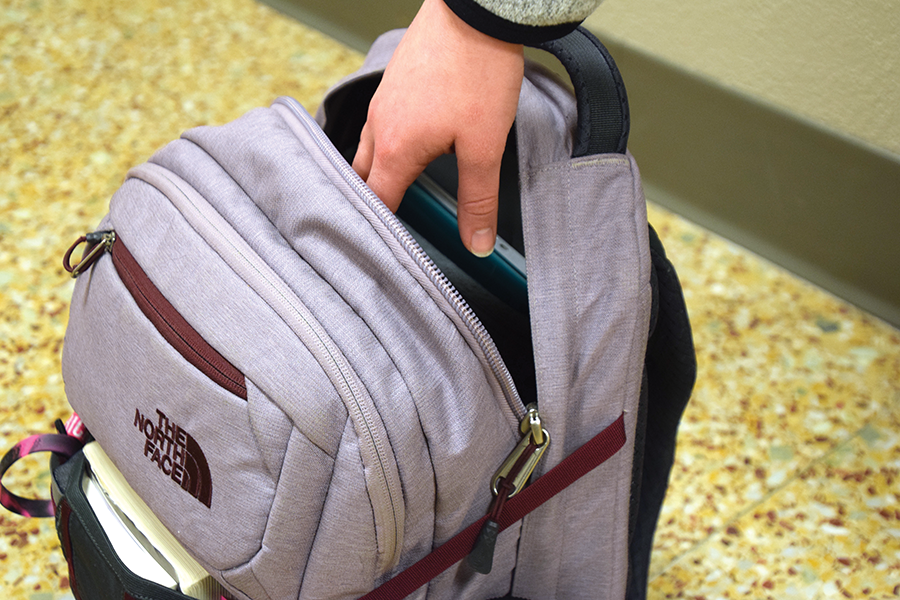Taser device activation in classroom determined not threatening
Recent considerations distance from zero-tolerance practices
A student’s handheld taser was activated during a fifth hour Business Innovations class Jan. 18, according to assistant principal Charles Johnson-Nixon.
“It was something his mother had given to him, simply for safety outside of school,” Johnson-Nixon said. “He has had it several times, but the whole thing was never a threatening thing.”
According to Disciplinary Procedure number 40 in the student handbook, incidents involving the possession or use of weapons on school property result in disciplinary actions that include, but are not limited to, a minimum five-day suspension or the movement to expel the student.
According to Johnson-Nixon, the weapons activation resulted in the minimum five-day suspension because the administration felt the incident was not of a threatening nature.
“This was a situation where there was no intent from anyone to do harm. No one at any time was at risk of being harmed. It was a situation where we dealt with it very quickly and very clearly,” Johnson-Nixon said.
Sophomore Jamie Sorenson, present when the weapon activated, said other students seemed unconcerned.
“No one really cared,” Sorenson said. “Everyone thought it was so cool because it was a taser and they’d never seen one before.”
According to Principal Scott Meyers, Park’s practices regarding weapons have recently shifted from a zero-tolerance policy to a procedure that considers the intent behind the possession and use of a weapon.
“Now I think we’re being, for some very good reasons, forced to look at it from ‘what was the intent’ and ‘what was the willingness involved,’” Meyers said.
“To speak specifically to an incident where a student brings a self defense device, there has to be discretion within that. If there’s an attempt to use something on somebody, then we are getting closer to that historical view of zero-tolerance,” Meyers said.
Johnson-Nixon said the determination of the nature of each individual incident is determined independently with each case.
“In a way it is kind of subjective. A good administrator would always err on the side of caution for the whole (student) body,” Johnson-Nixon said.
According to Johnson-Nixon, the administration did not make the incident public because of data privacy practices.
“Unless again it were a threatening situation or something like that, then we continue to inform,” Johnson- Nixon said.
History teacher Jeff Cohen said he feels administrative discretion with the incident may lead to future issues.
“It concerns me that we’re not being all informed, as a group, about these things,” Cohen said. “I understand the privacy issues, but you go from a taser weapon to a real gun. That’s the next step in my mind.”
Johnson-Nixon said the weapon’s style influenced his assessment of the situation.
“Any person can pick up a gun and use it, no matter what. Any person can pick up a taser,” Johnson-Nixon said. “Especially the kind that we had wasn’t the kind that one would shoot.”
Johnson-Nixon said other factors contribute to administration’s reasons for discretion from staff.
“Some staff members might think that because ‘little Billy’ might be a little Latino boy or a little black boy coming from a rough neighborhood, they might assume that ‘little Billy’ is a dangerous threat and he could be treated differently,” Johnson- Nixon said.
“People make assumptions about people based on their background and where they come from so one of the reasons why we don’t share certain things with staff members, and I’m not saying our staff would do that, but I’m just saying one of the things that I think about is how the student is going to be perceived.”

Hey guys it’s Atti and I’ll be one of the managing editors for this year. Some people refer to me as “The Chrysanthemum” but most people aren’t...

“‘Pictured above is me, Annabella Strathman, one of your editors-in-chief. I spend my time spaced between being in bed, at home, in the pub, and in...



